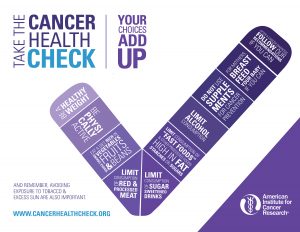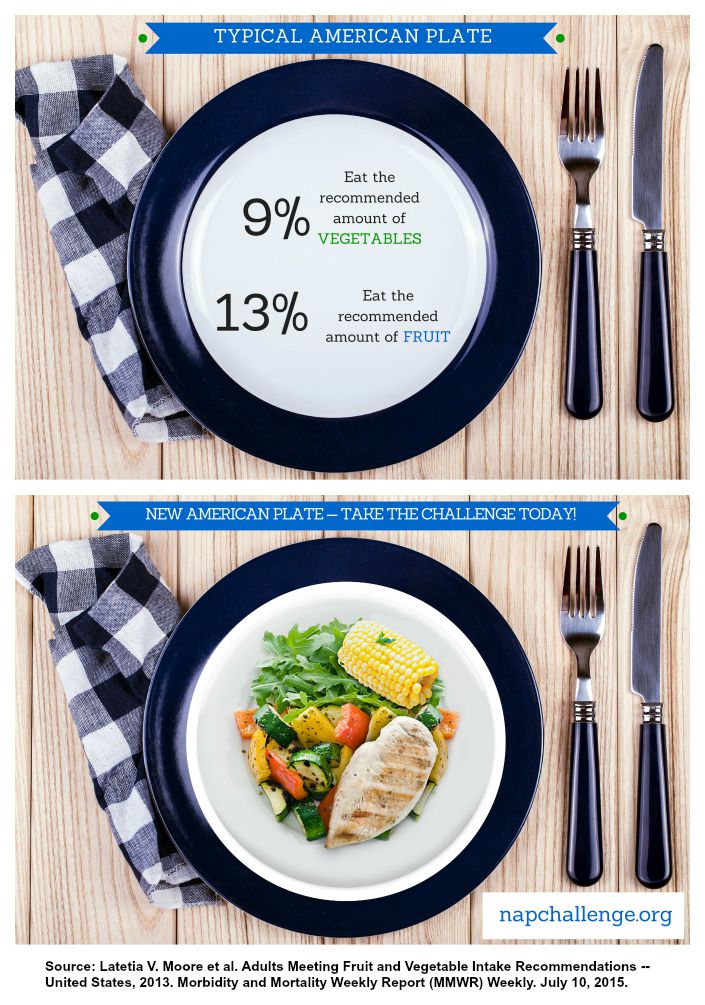Eating patterns are a key element in the cancer prevention message of the new American Institute for Cancer Research Third Expert Report. Recognition of eating patterns as a bottom-line strategy for health has been one of the major nutrition research advances in recent years.
What does this concept of eating patterns mean for your efforts to eat healthfully? It can seem a little confusing, especially if you’re surrounded by information focused on details of specific foods or nutrients as either essential or forbidden for healthy eating.

Is It the Details or the Big Picture?
In earlier research on diet and cancer risk, many of the studies focused on individual nutrients that seemed likely to be protective. That led to recommendations emphasizing specific food choices, such as including enough foods rich in vitamin C, beta-carotene or dietary fiber. Those foods – like berries, citrus, broccoli, spinach, whole grains and dried beans – are, indeed, excellent choices.
Perfection is not the goal, and is not needed to lower your risk of cancer. Focus on finding choices you can weave together into an eating pattern that can become a realistic long-term habit.
So what’s the problem?
• As research progressed, scientists learned that a variety of other nutrients and natural plant compounds (“phytochemicals”) also showed potential to work together to derail cancer development.
Getting a wide array of these protectors means including both larger amounts and wider variety of vegetables, fruits, whole grains and pulses (dried beans, dried peas and lentils).
• A laser-like focus on cancer protection coming from a few select nutrients led some people to assume that if some is good, large amounts would yield an even bigger shield of protection.
Research showed that to be false. In some cases, high-dose supplements seem to increase risk. Analysis for the new AICR Expert Report showed that the biggest difference in risk of some cancers is seen between people at the lowest end of vegetable, fruit and fiber consumption and those who eat modest amounts. Boosting consumption of nutrient-rich plant foods further can bring even more benefits for cancer protection and overall health. But there is a point where more of these nutrients is not better.
• Zeroing in on a few select nutrients ignores how diet affects hormones and inflammation, strong influences on cancer development. Adding Brussels sprouts to an unhealthy diet does not turn it into a healthy one.
If processed meats like hot dogs and bacon are staples in your diet, and you can’t imagine a day without red meat, that’s raising your risk of colorectal cancer. If sweets, sugar-sweetened drinks and high-fat fast food are frequent parts of your typical eating, the concentrated calories can be setting you up for weight gain that changes hormone levels and raises risk of at least 12 different cancers.
An “Ideal” Eating Pattern?
Considering your eating pattern and how it increases or decreases your risk of cancer means looking at the whole combination of what you eat and drink routinely. Don’t get hung up on whether you do or don’t eat the cake at your neighbor’s birthday party. But it means recognizing if the foods you say are for “special occasions” actually find their way into your diet quite often.
- There is no single best eating pattern. Research is clear in showing healthfulness of a plant-focused pattern – whether it’s Mediterranean or vegetarian, the DASH diet originally studied for heart health or a combination approach that’s based specifically on your preferences.
- Reducing cancer risk goes beyond eating pattern. Recommendations in the new AICR report drill down to the details of a cancer-protective lifestyle. Avoiding or carefully limiting alcohol, finding ways to move more and break up sedentary time, and steering clear of tobacco and excess sun exposure are all part of the picture.

Your Everyday Choices Do Matter
Your overall eating pattern and its role in helping you maintain a healthy weight form a driving force toward cancer prevention goals. That said, what makes a pattern is how your daily choices come together.
• Perfection is not the goal, and is not needed to lower your risk of cancer. Focus on finding choices you can weave together into an eating pattern that can become a realistic long-term habit.
• Include vegetables or fruit at lunch more often.
• Enjoy summer celebrations with choices other than hot dogs and sausage.
• Choose smaller portions of red meat, and a few times a week swap it out for seafood and meatless meals.
• Accumulate physical activity in 10-minute blocks throughout the day.
• Get out of a rut and learn to make vegetables so delicious that you’ll enjoy giving them a bigger portion on your plate at dinner.
• Rather than scrambling to react to the headlines of the day, trust the recommendations in the new AICR report as a blueprint that highlights the choices that will make the biggest difference.
• Independent studies from around the world show that the more closely you follow the AICR Recommendations, the lower your risk of developing cancer.
Use the AICR report recommendations as a menu. Anything you do helps. The closer you come to the whole package of recommendations, the more powerfully you are protecting yourself. That is how you weave your everyday choices into an eating pattern for cancer prevention.
You can get personalized feedback on how your eating pattern and lifestyle habits compare to the latest recommendations by using the AICR Cancer Health Check.






This means I really have to give-up my hot dog habit and make myself comfortable with the 3fs – fish, fruits and vegetables.